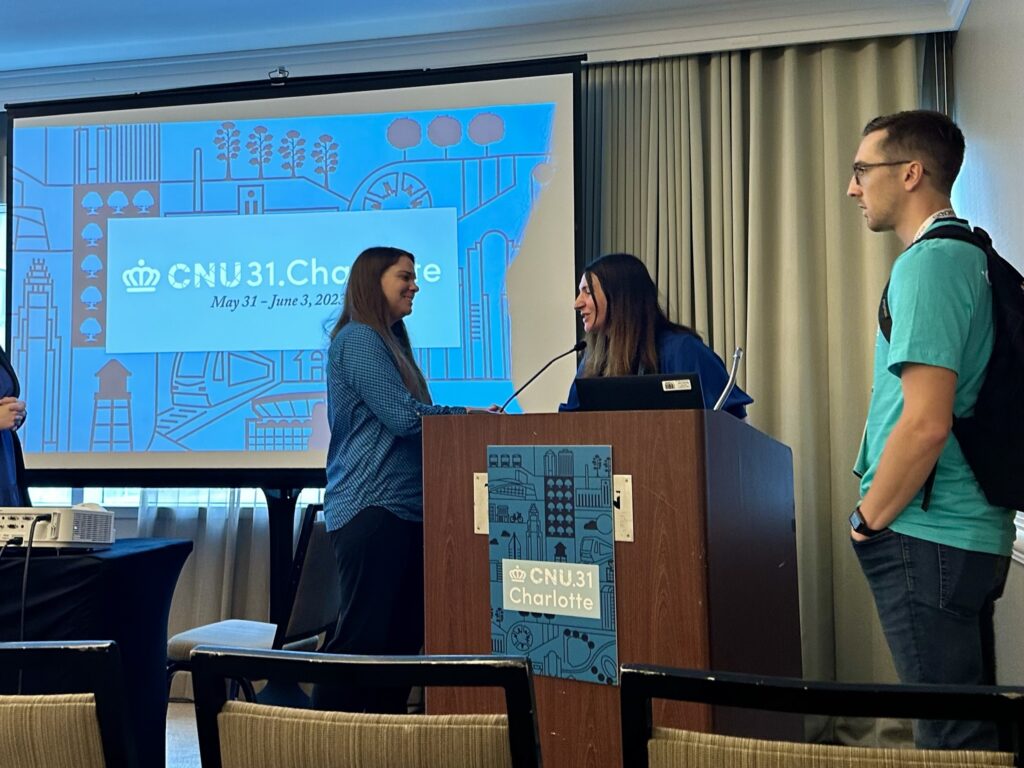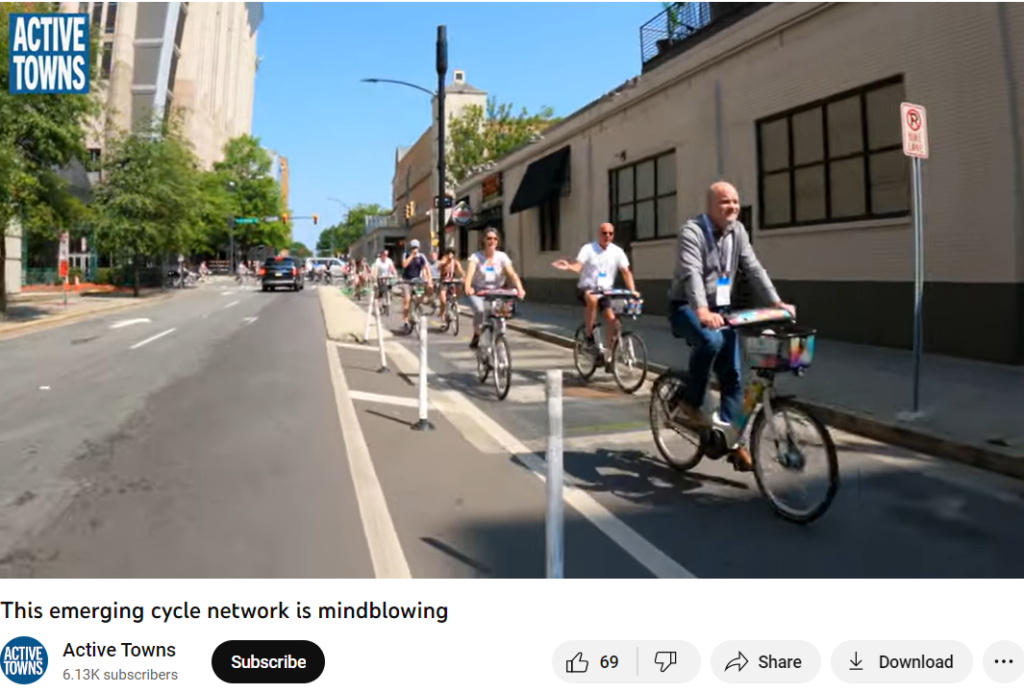Planning a more walkable future for Charlotte

Photo: Eric Zaverl
More than 1,000 urban planners, engineers, architects, and advocates gathered in Charlotte last week for the 31st annual Congress for the New Urbanism to discuss the best ways to build walkable communities.
Sustain Charlotte sponsored the Congress, served on two panels and hosted a bike-based education tour. Here are the highlights of what Director of Engagement and Impact Meg Fencil shared and learned as a panel participant, as well as a recap of the bike ride we led.
Charlotte is likely to be a “receiver city” as the climate crisis worsens
PLACE Initiative has released a map showing vast areas of the U.S. that are projected to become more vulnerable to natural disasters in the coming decades. As the intensity and frequency of floods, droughts, wildfires, and extreme temperatures increases, more people will move to areas with lower environmental risks — including Charlotte. Check out that map here.
Charlotte’s population is currently expected to grow by approximately 400,000 residents by 2040. That figure doesn’t include an estimate of how many people may move here voluntarily or due to displacement from the escalating climate crisis.
How can we accommodate that growth equitably and sustainably?
Panelists highlighted the importance of Charlotte’s land use and transportation plans and policies, including the recently passed Charlotte Future 2040 Comprehensive Plan, Unified Development Ordinance (UDO), Strategic Mobility Plan (SMP), and Strategic Energy Action Plan (SEAP). Mecklenburg County’s Farmland Preservation Plan aims to protect agricultural land from development and support the next generation of farmers so we can grow more food locally.
Land use reforms like Charlotte’s UDO can help us mitigate and adapt to the climate crisis by shortening driving distances between people’s homes and daily destinations, and by curbing the sprawl that harms our natural environment. An analysis by the Rocky Mountain Institute found that allowing Charlotte to develop more densely could reduce residential vehicle miles traveled by 8% and reduce greenhouse gas emissions by 5%.
Helping people live close to public transit is one of the best ways for a city to become more walkable
Equitable transit-oriented development (known as ‘eTOD’) is an intentional approach to supporting a broad range of housing choices within walking distance of transit lines. The median-income household in Charlotte spends 29% of its income on housing and another 22% on transportation. That’s a combined 51%, which is considered “cost-burdened for just these two basic living expenses. Many lower-income households spend even more of their income on basic necessities. Living within walking distance of high-quality public transportation could help individuals and families to save on transportation costs while still getting to work and daily destinations quickly.
Unfortunately, Charlotte largely missed the boat on affordable housing near the Blue Line light rail. Very few affordable housing units have been built near station areas. The good news is that the city and CATS are taking a more intentional approach as they plan the future Silver Line light rail that will connect Mecklenburg County from the southeast to west of the airport.
Equitable TOD makes a lot of sense. Taxpayers contribute to large transit projects, so we should all benefit from a better built environment near the transit lines and station areas. That includes the ability for people of all ages, abilities, and incomes to live near transit if they choose.
It’s important that eTOD strategies align affordable and workforce housing with high-quality public transit, whether that’s light rail, streetcar, or bus. Although rail gets most of the public’s attention, bus routes are really the unsung workhorse of any public transit system because buses take people to far more places than light rail can.
As Charlotte plans how to build and preserve housing choices, leaders should also focus on ways to make all of Charlotte’s buses fast, frequent (ie, they come every 15 minutes or less), reliable, and walkable.
Sustain Charlotte hosts a bike tour for CNU guests
Sustain Charlotte organized a bicycle tour for the Congress for New Urbanism guests. The tour started in uptown and traveled north, showcasing greenways and bike facilities. Two tour segments featured projects that have transformed dangerous four-lane highways into neighborhood streets that include safer “AAA” bike lanes. These projects, completed after years of advocacy by Sustain Charlotte and neighborhoods, are just the beginning of the Priority Bike Network, which will encourage more people to commute on bikes and scooters safely. Through this tour, participants were given a first-hand look at excellent examples of the power of advocacy and having a policy like the 2040 Comprehensive Plan.
Check out this recap of the bike ride.

Thanks for reading!
As a nonprofit, community support is essential for us to keep doing what we do — including providing free articles like this. If you found this article helpful, please consider supporting Sustain Charlotte.
Want to stay in the loop? Subscribe to our weekly newsletter and follow us on Instagram, Facebook, and Twitter.
